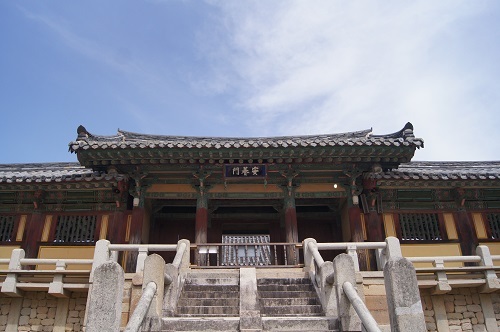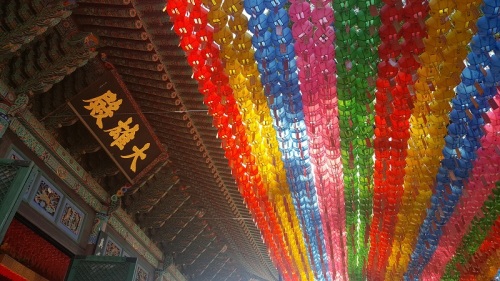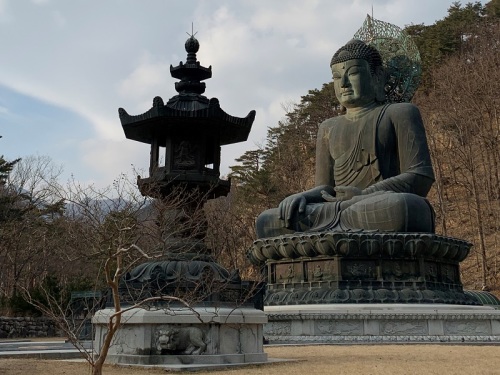
9 Days 7 Nights South Korea Pilgrimage tour 9天7晚韩国佛教之旅
Group size: 10 and above
Group size: 10 and above
Enquire

6 Days 4 Nights Seoul Templestay experience and Free & ...
Enquire

If you plan to travel to East Asia, one of the best things to experience is a temple stay. If you are wondering what it is, it literally means what it means—temple stay or staying at the temple. It has existed for more than a decade and yet there are already a lot of travellers and Buddhists who take such practice!

Figure 1: Mediation Temple Stay
The purpose of the temple stay is to share an experience with a newbie or an adventurer to step in the life of Buddhist practitioners and to learn Buddhist culture. Also, these participants can have a first-hand encounter with Buddhism stories told by Buddhist monks. But first, how did it begin? It began on the time of the 2002 World Cup as an experiential program of Korean Buddhism. This was innovated by the Jogye Order of Korean Buddhism with the aim of preservation of at least two millenniums of Buddhism culture. Historically, the temple stay is done every year during winter and summer seasons. The participants to this cultural experience amounts to thousands and would have to enter a 100 day meditation retreat in any temple of their choosing, provided that it gives out the temple stay program. In other words, it is a spiritual journey that is available for everyone.
There are various types of temple stay such as one-day, experience-oriented, and rest-oriented.
One-day temple stay are provided for those who want to experience the program but their schedule would only permit a day. Normally, one-day temple stay takes about two to three hours with the inclusion of tour, meditation and tea ceremony.
Experience-oriented temple stay is for those who are given the opportunity to experience the monastic life. This is usually done on the weekends or an overnight stay. The program for this type includes chanting, 108 prostrations, and meals for a Buddhist in a traditional bowl and meditation. The participants are also provided to experience Buddhism culture such as lotus lantern making or prayer beads making. But more than that, the program aims to cultivate one’s inner peace.
Rest-oriented temple stay is literally oriented for those who want to relax. The temple will serve as place for curing a fatigued mind and encouraging a better and newly cultivated energy.

Figure 2: Tourist During Temple Stay
Since the program allows visitors to experience life as a Buddhist monk, its daily routines should also be discussed. To highlight, the participants are looked forward to help with the chores, attend the Buddhist services, and also, communicate with the monks.
Monks will greet participants at the main gate. Some participants claim that the entering the gates probes away the city pollution, leaving their urban life behind for a while.
As any other monasteries, the temple stays require silence and order. One thing cannot be achieved without the other. Hence, from the moment that participants entered the temple, it is expected to be silent at all times.
The entire experience would feel like a time travel. After the orientation, the life as a monastic practitioner ensues. Activities include the temple tours, meditation, tea ceremony, monastic meal, yebool and other traditional practices.
The temple tour is aimed to expose participants to the Buddhist culture. They get to see exclusive Buddhist cultural properties such as the structure, architecture, sculpture, art, craft, and paintings, and alongside the tour is a commentary for each masterpiece.
Next is the meditation, which is provided to cut off all thoughts and to simply relax. This activity aims participants to learn mindfulness and concentration. Tea brewing and drinking is a practice of meditation and concentration. When a participant drinks the tea, all five senses work towards the action.

Afterwards, there is also a meal preparation, but the difference is, the temple stay offers monastic meals. This means that the food bowl is rationed containing a just right amount of rice and vegetables. The traditional way of eating the meal of Buddhist monks and nuns known as the Balwoogongyang is also practiced. This involved the spirit of equality, cleanliness and thrift. Everyone shares the same food and there is no left over wastes.
Aside from that, a self-reflection practice known as the Yebool is performed. This is a Buddhist chanting that contains messages taking refuge to the Buddha and his teachings. It is noted that while chanting, participants feel calm and cleansed.
The popular countries for temple stay are Taiwan and Korea. One of Taiwan’s famous monasteries is Fo Guang Shan, which has the world’s biggest Buddha statues!
Temple Stays in Taiwan Ik Chin Offers
If you plan to travel to East Asia, one of the best things to experience is a temple stay. If you are wondering what it is, it literally means what it means—temple stay or staying at the temple. It has existed for more than a decade and yet there are already a lot of travellers and Buddhists who take such practice!
Meanwhile in Korea temples Beopjusa, Bulguksa, Magoksa, and Haeinsa are recognized as world heritage. Both countries practice similar routines. Hence, the trouble would only be up to deciding which place to go!
Temple Stays in Korea Ik Chin Offers

Group size: 10 and above


If you plan to travel to East Asia, one of the best things to experience is a temple stay. If you are wondering what it is, it literally means what it means—temple stay or staying at the temple. It has existed for more than a decade and yet there are already a lot of travellers and Buddhists who take such practice!

SOURCES:
Cerny, B. (2011). Temple stay: 48 hours at Sudeoksa Temple. Retrieved from http://travel.cnn.com/seoul/visit/temple-stay-48-hours-sudeoksa-temple-936870/
Doojin, J. (2009). temple stay World Spotlight. Retrieved from
Hodgins, A. (2017). I Spent a Night in a Korean temple stay and Here's What it Was Like. Retrieved from https://www.canadiantraveller.com/I-Spent-a-Night-in-a-Korean-temple stay-and-Heres-What-it-Was-Like
Hyunbul News. (2001). World Cup Temple Stay Korean Buddhism 'Hyoja’. Retrieved from http://www.hyunbulnews.com/news/articleView.html?idxno=126040
Jong-Gil, Y. (2008). Travel to me, temple stay. Retrieved from http://www.digitalorganic.net/bbs/board.php?bo_table=oculture&wr_id=10
Selective Asia. (n.a.). Stay overnight at Fo Guang Shan Monastery. Retrieved from https://www.selectiveasia.com/experiences/stay-overnight-at-fo-guang-shan-monastery
temple stay. (n.a). temple stay: Finding your true self. Retrieved from https://eng.temple stay.com/